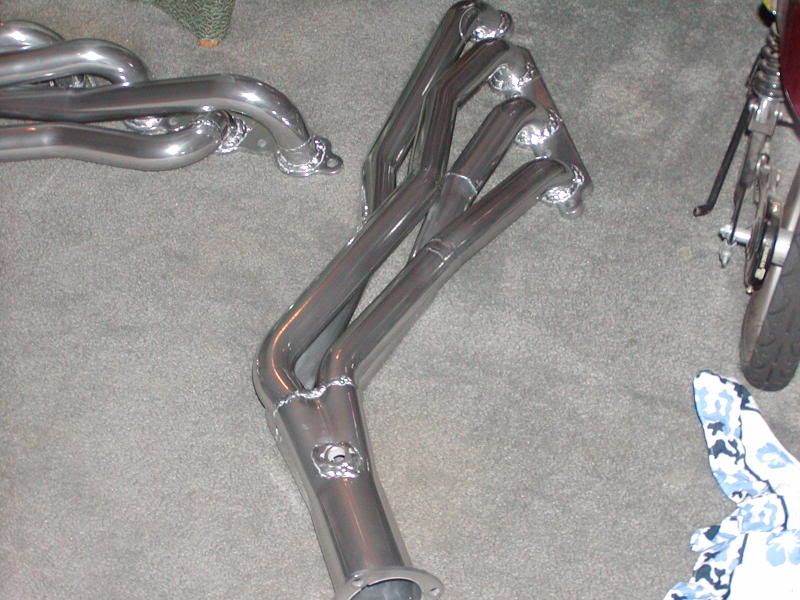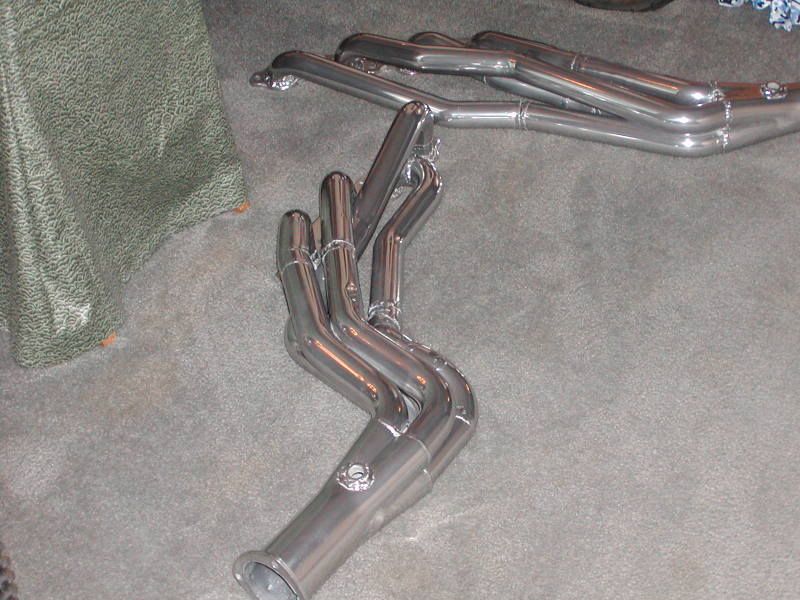Starting this to answer as many questions as I can in one place. I am trying to compile the most complete list of what to do to complete a conversion as I possibly can. I am only a man so don't blame me if I forget something. I will work on this slowly as time allows. Let me know if I forget something. Drinking lots of beer just goes without being said.
A good read to start your education...
Gen III GM Small Block: Engine Builder
http://www.automotiverebuilder.com/ar/eb040538.htm
How to Build High-Performance Chevy LS1/LS6 V-8s by Will Handzel. Publisher Cartechbooks.com ISBN 1-884089-84-4
HPBooks CHEVY LS1/LS6 PERFORMANCE by Christopher P. Endres. Publisher Penguin.com ISBN 1-55788-407-2
GM manual 88959384 "LS1 ENGINE KIT INSTALLATION GUIDE"
Another document good to have if you can get it is the ASE 16013.00-2 for GEN III V8 Specialized Engine Repair. This is a document for remanufacturing a GEN III engine.
A good read if you want to do a stroker... http://www.gmhightechperformance.com/tech/...s1_engine_build
Removal of OBS engine...
Be environmentally friendly and have your a/c evacuated and reclaimed if you have freon or 134a in your system. Most places will do it for free, they keep the gas and re-use it. That pays for the labor of reclaiming it.
Remove OBS engine and transmission as one piece...
Step 1 is to set the parking brake.
Step 2 is to have the battery disconnected. I prefer to remove it from the vehicle to prevent shorts. Don't set it on concrete for too long unless you just want to buy a new battery.
Remove exhaust system from factory exhaust manifolds.
Cut/sawzall the exhaust off behind the OBS catalytic convertor(s). Do not discard, old cats are valuable. Take them to the recycler to recover some funds.
Remove air intake system.
Drain all fluids(coolant, transmission fluid and oil). Leave old oil filter in place.
Remove all electrical connections from old engine. Go ahead and label them if you know where they came from. You will be re-using the coolant temp, oil pressure, starter, alternator and a/c wiring.
Remove upper and lower radiator hoses. Feel free to cut them off because you won't be re-using them.
Remove the top half of the radiator shroud.
Remove the radiator fan by unbolting it from the water pump.
Remove the lower radiator shroud.
Remove transmission cooler lines. It's going to get messy here. Be prepared.
Remove engine cooler lines if equipped. Again, messy.
Remove the radiator.
Remove the heater core hoses by cutting them off at the firewall, you'll replace them with new hose the correct length when the new engine goes in.
Disconnect the throttle linkage and remove the cable from the bracket. If you have throttle body injection you will have to totally remove the cable from the firewall and accelerator pedal. This will be replaced later with an S10, NBS or Fbody throttle cable. This list will be updated later as others let me know what cables they used.
Remove the cruise control cable from the throttle linkage. A longer one will be required if you had TBI.
Remove the brake booster vacuum hose from the intake manifold if you have one.
Remove power steering hoses and drain fluid (save the return line,it's the one with a light weight hose clamp on it, you may use it again in your conversion)
Remove a/c low pressure hose from accumulator canister on firewall and disconnect high pressure line at condensor behind front grill. Disconnect the hose assembly from the compressor and save for later. Whomever builds your a/c lines may need the connections.
Remove starter and power leads(main power battery lead and the purple solenoid signal lead). You should be able to reach them from the top side under the passenger side exhaust manifold, if not remove the manifold. If you don't like that option you can crawl up under the truck and unbolt the starter and then disconnect the two wires.
Remove alternator lead if you haven't done that already.
Remove and save oil pressure and water temperature sending unit.
If you have a returnless fuel rail, cut the fuel line just behind the old fuel filter and cut the return line at just about the same location. Unbolt any bracket and hanger for the fuel lines going towards the front of the truck.
If you have a return type fuel rail, two connections, do not cut the fuel lines, disconnect them at the throttle body and disconnect any mounts than hold the lines to the engine and transmission.
Remove speedometer cable if equipped. Disconnect speedometer sensor otherwise.
Remove all transmission wiring such as the main connector on passenger side above the oil pan on 4L60E vehicles.
Remove gear shift selector wiring on passenger side if you have it.
The transmission cooler lines will come out with the engine and transmission.
Unbolt the transmission mount from the crossmember and unbolt the crossmember from the frame.
Disconnect the shift cable or selector rod from the transmission.
If you have a manual transmission you'll have to remove the shift handle, shift boot cover, shifter filler panel and finally unbolt the top loader shifter from the transmission. Next you need to remove the hydraulic line from clutch slave cylinder or remove the slave cylinder from the trans.
Optionally, you can now remove the drive shaft.
Remove the engine mount bolts. There is one on each mount using 5/8 bolt heads and 11/16 nuts.
The assembly should be ready to come out about now. Time to remove the hood because you are going to need the room.
Hopefully you have an engine hoist and chain available about now. A load leveler comes in handy too when removing both parts at once. A couple buddies would be helpful, too. Go easy on the beer drinking at this time because it's easy to get hurt.
You'll need to put a jack under the tail of the transmission to get the mount stud out of the crossmember hole. Use the factory engine lift brackets if you have them, otherwise bolt your chains to the cylinder head at the passenger side rear and the other end can go on the driver side some place that has a 3/8" or larger bolt hole. The engine will be heavy so use good quality bolts with a minimum of 10.8 metric reading or 6 points on the head SAE.
If you have already removed the driveshaft, I like to take a heavy freezer bag and slip it on the transmission tailhousing and then electrical tape it on really tightly to prevent making a big mess. An old slip yoke or plastic plug works good but I don't have either.
Time to hoist the engine out. If you don't have a leveler, one of the buddies will have to maintain weight on the transmission to angle the engine assembly upwards to clear the radiator core support.
Good luck, have fun. All the easy stuff is over, now it's time to use your brains and max out your credit cards.



 Reply With Quote
Reply With Quote




